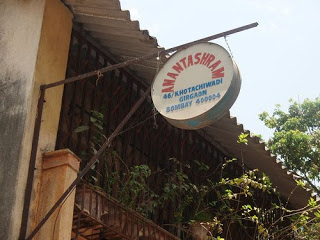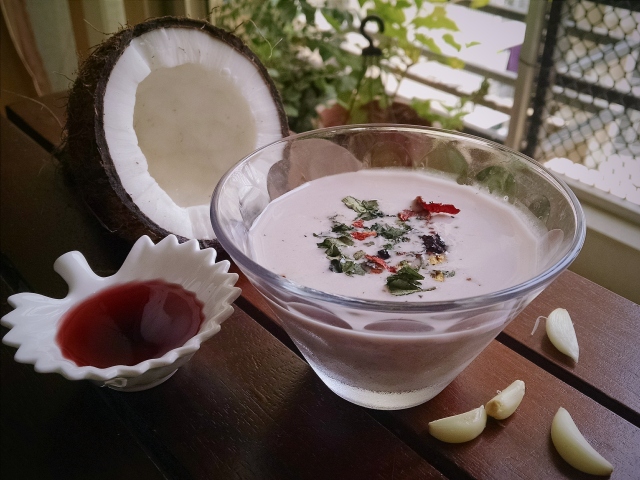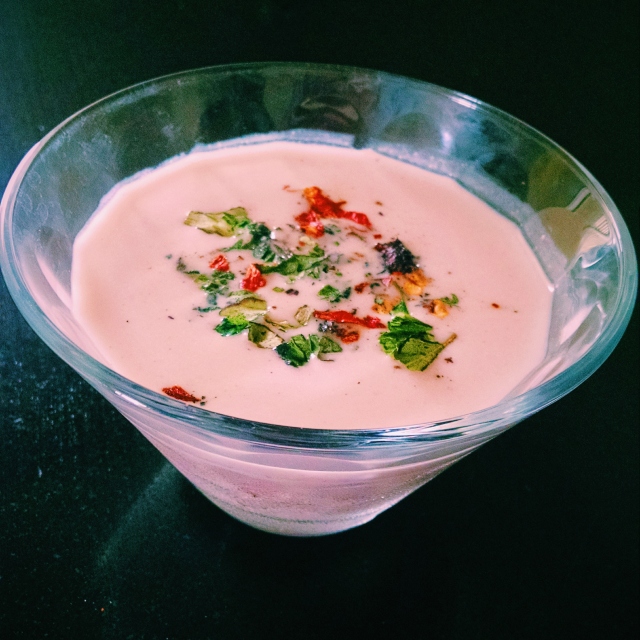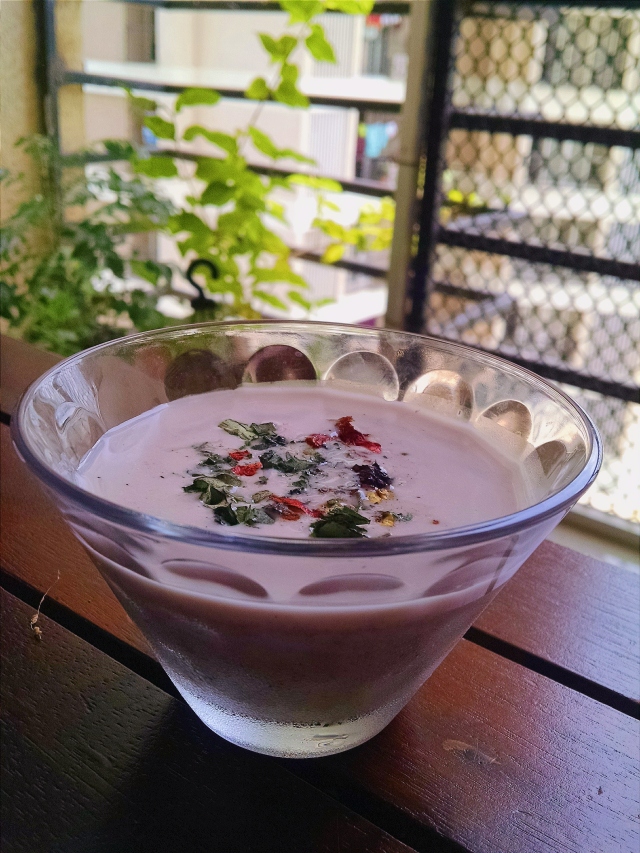Anant Ashram, the name, is misleading. It is nothing like what it hints at.
Anant Ashram, an 80 year old bhojanalay, yes, you heard me right, a bhojnalay – a humble eatery, tucked away in the heartland of Girgaon was probably the best Goan Saraswat eatery in town. For the uninitiated, Girgaon is the old traditional Mumbai, part of which is thankfully still preserved to its former glory by conferring heritage status to select few localities within it, namely Khotachiwadi. If you want a slice of how Mumbai was pre-independence era, a walk down the lane of Khothachiwadi will be a time warp 75 years in the past. If you had done that about 5 years back, it would have been difficult to get past Anant Ashram. While the place did not announce itself with a fancy board, the whiff from its kitchen was enough to tantalize you over its threshold.
Anant Ashram was a family run eatery with no fixed menu. Catch of the day was the order of the day, cooked with hand pounded traditional masalas on a wood-fire. Its cobbled stone flooring, wooden benches, were as old as the place itself. Despite its humble ambience, the place, true to its tradition of Acharis(the cooks), was spotlessly clean. You did not need deep pockets to afford a square meal here and a scrumptious one at that. An uptight and to-the-point attitude of servers and the host often came across as rude. However, in today’s time, where fake sugar-laced attitude and a plastered smile is considered hospitable, a self-respecting, no-nonsense and honest attitude is often taken for rude. If you ask me, I’d take uptight over pretentious ANYDAY. That’s how the older generation was, and probably that was their way to treat everyone equitably irrespective of your cultural or financial background. You’ll be surprised to know, the regular clientele at Anant Ashram were traders from Zaveri bazaar and Jain doctors from affluent hospitals around the area, who would slyly pass their shudh shakahari(vegetarian) lunchboxes to their drivers and devoured Gomantak style seafood delicacies at the bhojanalay shoulder to shoulder with daily wage labourers. Khapdes, the owners, apart from being consistently “rude”, were also super consistent at the quality of food they doled out. Par excellence! Prawns, Clams, Crabs, Fish, Mutton, Chicken, in Gomantak preparation was unmatched.
When I think of Anant Ashram, what shines through are the hillocks of crispy fried mandeli(anchovy) on a platter that came complimentary with the food. Servers would grab a handful of mandeli and dole it out generously on the plate, like how they would serve papad at a sit-down community lunch. Another was solkadhi to wash down your over satiated palate with. Me, and R, during our pre wedding preparation days, had carefully selected Gaiwadi which houses a zillion wedding invitation printers, and is a lane away from Khotachiwadi, for a reason. Ha!
Unfortunately, Anant Ashram shut shop about 5 years ago due to family disputes. I can bet the neighbourhood will not be the same again. However, a stroll down Khotachiwadi heritage village dotted with quaint houses would be worth a trip down the memory lane. I’ll hopefully survive the bend in the road that housed Anant Ashram by simply imagining the delicious whiff floating past its kitchen. “Anand mara nahin, Anand marte nahi” :))
This Solkadhi recipe is my homage to Anant Ashram. I’ve learnt it first hand from Saraswat owner of a quaint homestay in Pat Parule, a small village in Goa-Konkan border. Saraswats have various ways of preparing Solkadhi, but broadly it is classified into two: One with coconut milk, another without it. I’ll share with you the recipe of the former which is more classical and popular version. It is served as a palate cleanser and is considered to aid digestion. Solkadhi, rice and rava fried fish is a match made in heaven. Do try!
Ingredients –
1 fresh coconut, scraped*
2 garlic cloves
10-15 pickled kokum skins / or 2-3 tbsp kokum agal (kokum extract)*
1 tbsp sugar
8-10 curry leaves
1-2 dry red chilly (Kashmiri or Byadgi variety)
pinch of asafoetida
Salt to taste
This is how I made it-
1) Soak kokum skins in half a cup of hot water, leave aside for 15 mins.
2) Soak scraped coconut and garlic cloves in a cup of hot water, leave aside till it comes to room temperature, then grind it along with the water. Sieve it through muslin cloth and squeeze out thoroughly till coconut milk is completely extracted from the pulp. You can repeat the process if you want a slightly thinner solkadhi, but I’d recommend taking only the first extract.
3) Now sieve the soaked kokum skins through a strainer and you’ll be left with a beautiful deep purple kokum extract.
4) Add salt, sugar, asafoetida and half of the kokum extract to the coconut milk. Stir till well incorporated, taste, adjust salt and sugar seasoning. You can add more kokum extract for a tangier taste, adjust the sourness to your liking.
5) On an open flame, char the dry red chilly till 80% blackened. You can do so by holding the stem of the chilly with a tong and then roasting it on the flame. Charring makes the chilly skin crumble to touch. Once it has cooled down, simple crush it lightly with your fingers and add the crushed skin to solkadhi. Do wash your hands thoroughly with soap after this step.
6) Curry leaves have to be charred in a similar way, crumbled and torn roughly with fingers and then added to solkadhi.
7) Refrigerate the solkadhi for not more than 15 minutes(this is optional). Solkadhi is best consumed fresh, if you keep it for more than an hour, the solids separate and float on top. However you can give it a nice stir and it’ll come together again.
Notes-
1) You can use tinned coconut milk for the recipe, however I strongly recommend using freshly extracted milk. But if you must, Kara is the best one available in Indian market.
2) If using readymade kokum agal/extract, make sure you taste it before adding. Most readymade extracts have salt and sugar content and you’ll need to alter the recipe accordingly.
3) Step 6 and 7 of topping the solkadhi with charred red chilly and curry leaves is completely optional, but it does add a beautiful dimension to the kadhi.





I had no idea mandlis are anchovies! Learn something new everyday. How I wish we could freeze-frame Mumbai from 20-30 years ago. All those little villages with so much character!
LikeLike
There are a few localities which still have that old world charm. Khotachiwadi being one of it.
LikeLike